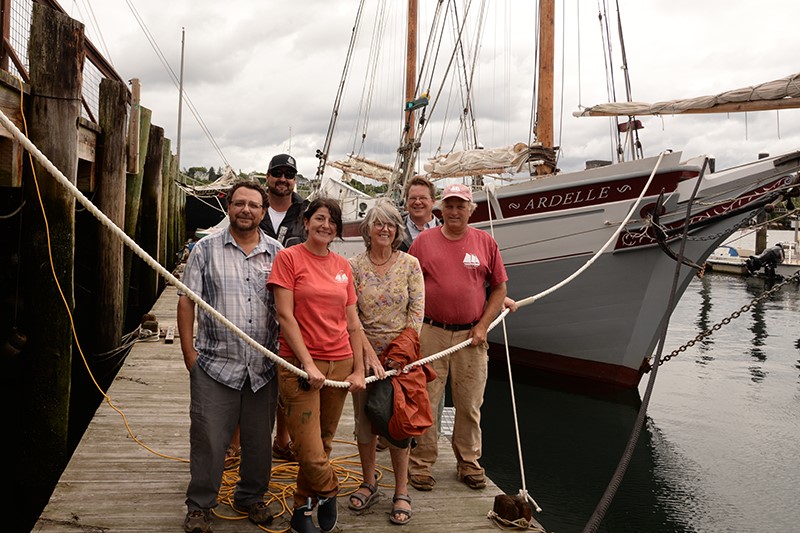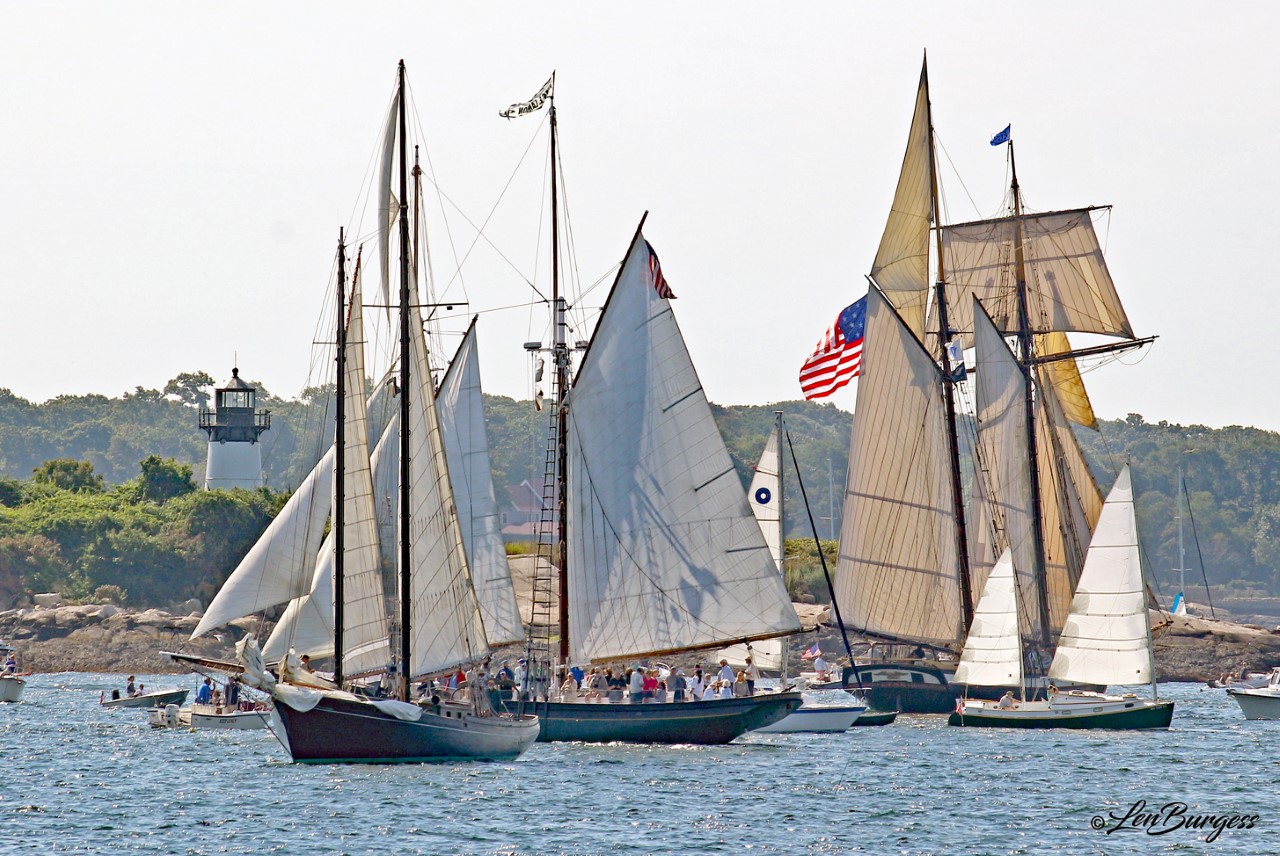“We’re hoping for good winds,” Michael De Koster, executive director of Maritime Gloucester, says huddled among his fellow seafarers at group headquarters on the eve of the Gloucester Schooner Festival. Last year, COVID-19 forced cancellation. But now sailors, majestic schooners, and avid spectators rendezvous for three days to celebrate the storied history and promising future at the America’s oldest seaport. “This is the closest you’re going to get to what this harbor looked like 100 years ago,” De Koster adds.
New features this year include a dory race and a third schooner docking location at Rocky Neck. Twenty-four schooners of various sizes—small, medium, and large, measured by their deck lengths—will participate in the annual four-day event, September 2-5.
A Schooner Challenge, too, joins the roster as local captains test the waters and their vessels in friendly competition over an “obstacle” course to win the coveted Rum Bottle Award. Captain Harold Burnham and master shipwright from Essex wryly says, “The challenge is to find out what it really is.”

In one sense the festival was inspired by the “races” of New England fishermen in the late 19th century. Homebound after long spells at sea, they challenged each other to make it to port with their fresh cod and be first in high regard. In 1985, the American Schooner Association announced whimsically in their newsletter to members that “The Canadians are coming…” A race was planned from Gloucester to Norman’s Woe and back along with a Parade of Sail along the Inner Harbor. The events morphed into an annual celebration, now in its 37th year.
Schooners, in fact, originated in Gloucester, historians agree. The fast, sleek, and adaptable vessels are considered the sturdiest of all time. Probably based on a Dutch design, schooners resulted at the hands of local shipbuilder Andrew Robinson who launched his first schooner in 1713. Elated at its maneuverability, a spectator is believed to have exclaimed, “Oh, how she scoons!” Robinson adopted the word scoon, from the Scottish term meaning skim, a spot-on description for its performance.
Festival chair Daisy Nell Collinson, one of the founders, likens schooners on parade to a “water ballet.” She will be co-captain with her husband Stan guiding the 32-foot Redbird, home-based in Essex. “It’s breathtaking to see these boats, and it’s why we changed the race. Reach out. Reach back. Twice, so all the people on the boats can see each other and participate. It’s a spectator race and a commemorative race. We’re not out for blood.”
KD Dench, operations manager at Essex Shipbuilding, is skipper of the Lewis H. Story, one of four vessels here built by Harold Burnham. She thinks the festival transcends the four days. “It’s living history and it’s continued history. This is part of the fabric of our community and what we were built by. But it’s continuing and it’s still happening. There are people still making boats and using the boats living off the sea. It’s so important for us to carry on and see a future.”
Maritime Heritage Day joins ranks within the Festival with schooner deck tours, vendors, skill demonstrations, and family activities. There’s something for everyone, Captain Heath Ellis of the Thomas E. Lannon says. “All can enjoy these kinds of boats—two-year-olds or people in their 90s.”
The capstone, of course, unfolds on Sunday with the Parade of Sail as the procession of schooners proceed from the Inner Harbor past the Fisherman’s Memorial on Stacy Boulevard to the race starting area off Eastern Point, followed by the Mayor’s Race for the Esperanto cup and the Columbia Trophy.
Daisy Nell says, “There aren’t many places you can find a common denominator that everybody likes. But this is something that is a true winner.”
For more information, visit maritimegloucester.org/schooner-festival.

